The X Button
Counting Down
by Todd Ciolek,
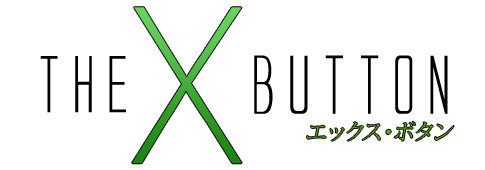
The X Button will be on vacation next week, so I hope all of you enjoy the various holidays and the inevitable spate of “Best of the Decade” lists you'll see. I'll have some of them myself in the next column, but for now I'll focus on the best of this year's under-appreciated games.
The real game-related highlight of this week is, for many, the Japanese launch of Final Fantasy XIII. Square Enix's American branch has wisely chosen this moment to release a bunch of translated screens from the game, as if to remind you that you can wait three months and play the whole thing in English. Or you can pay $90 for an import that you might not even understand.

My favorite of these new screenshots shows the party fighting a downright gigantic (and disdainful-looking) Adamantoise, one that's probably not even a boss. It plays up the game's technical qualities in a way that all of the cinematic scenes haven't. Those are pretty, but Final Fantasy's had shiny cutscenes since the PlayStation days. Huge, trunkless elephant-turtles are another thing entirely, as this Game Center CX clip shows us.
Not that we are superficial twits who play these games solely for visual splendor. I, for one, play them because they annoy hopelessly uptight game nerds.
NEWS
SUNSOFT RESURRECTS TELENET'S TROVE OF SO-SO GAMES
Sunsoft teased a big announcement through Vic Ireland's Gaijinworks studio last week, and it was a genuine surprise: Sunsoft now has the rights to Telenet Japan's entire catalog. For those who never grew up in the Sega Genesis era, Telenet was a prominent Japanese publisher, putting out Cosmic Fantasy, the Valis series, Exile, Earnest Evans, Granada, and plenty of other games. Most of the games from Telenet (and their sub-developer Wolfteam) weren't very good, and yet the company won over many Americans through its Renovation label, which introduced many a young geek to big-eyed anime stylings. So there were a few mourners when Telenet, after years of doing nothing, closed down in 2007.
And now, Telenet's catalog is back. Ireland extols its virtues in the official press release, since he actually localized two Exiles and one Cosmic Fantasy back when he was running Working Designs. Sunsoft plans to release Telenet games on the Wii's Virtual Console next year, with open invitations for fans to request specific titles on Sunsoft's forums.
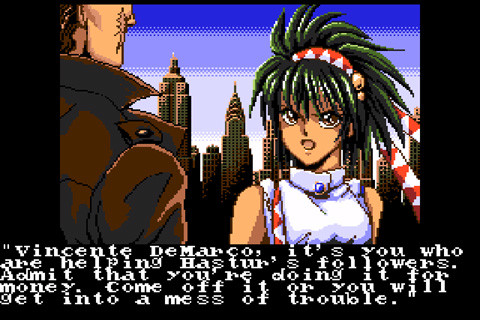
For starters, fans could ask for El Viento (above), my favorite Telenet/Wolfteam title and the only good part of the Earnest Evans franchise. There's also the Exile series, still unique among RPGs for setting an anime-ish adventure during the Crusades. And then there's Cosmic Fantasy 2, a mediocre RPG that was nonetheless the bearer of the first gratuitous shower scene the West ever saw in an RPG. That's a piece of history.
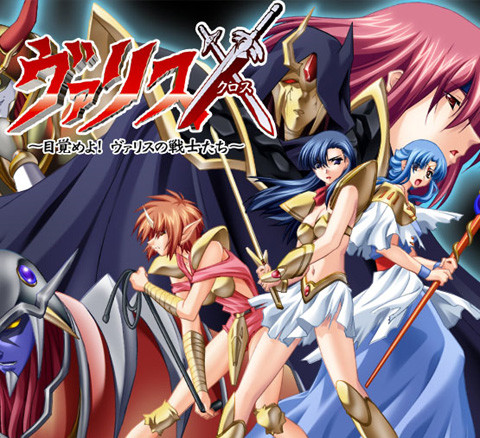
There's no word on whether or not the Telenet deal also includes the pornographic Valis X adventure games released by Eants, and I know that some of you care about that.
MEGA MAN 10 ONE STEP CLOSER TO SELF-PARODY
Last year, Mega Man 9 stirred an entire generation's nostalgia for the Mega Man games of the NES. Only one thing was missing: a considerably more ridiculous sequel. And that's what Mega Man 10 is, simply by virtue of Sheep Man.
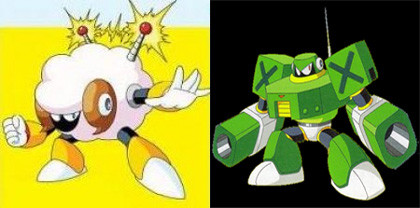
Sheep Man and his Thunder Wool attacks were but the first new boss matchup introduced for Mega Man 10, though the second, Commando Man (right), is more generic in design. Aside from the new round of robot masters, the game sports Protoman as a playable character from the start (with a third possibly joining the cast). Like Capcom's first experiment in making a deliberately NES-grade Mega Man game, Mega Man 10 is a downloadable game for the Wii, Xbox 360, and PlayStation 3. It'll be out next March, when I expect everyone to protest the absence of a female robot boss this time around.
SAKURA WARS: SO LONG, MY LOVE IS A-CHANGIN'
A delay or two was perhaps inevitable with Sakura Wars: So Long My Love. As one of the Sakura Wars mixes of dating simulator and strategy-RPG, it's full of text to be translated and voice acting to be re-recorded. So let's not complain that NIS America announced a new release date of March 23 and a slight change in release plans. The game was to ship for the Wii and PlayStation 2 in a two-disc edition, with one disc having English voices and the other featuring the original Japanese track. Well, now it's just the PlayStation 2 version that gets such treatment, as it'll be a $39.99 two-disc special edition with an artbook and poster. The Wii version is just the English-dubbed version of the game, and it's consequently ten bucks cheaper. Each version gets different box art as well.
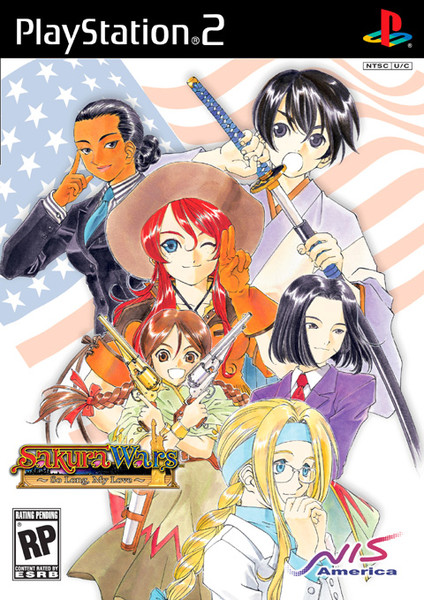
The PlayStation 2 one features the softer, penciled style of Kosuke Fujishima (or is it Hidenori Matsubara?), while the Wii game gets brighter, anime-like artwork.
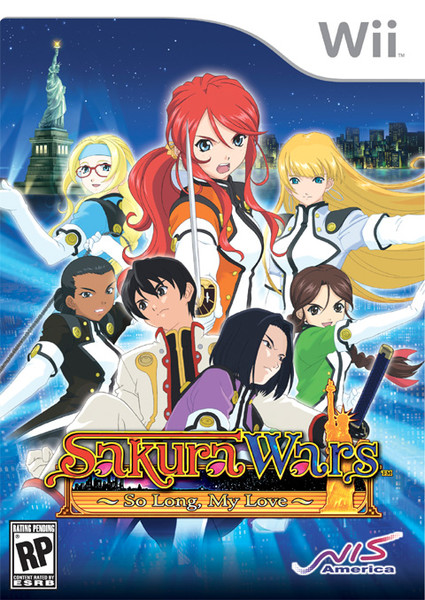
Astute Sakura Wars followers will also note that the Wii cover has Rachet Altair, who U.S. anime fans last saw representing destructive, self-centered American culture in Sakura Wars: The Movie.
All of this comes after NIS America revealed name changes for at least two major characters. The young gunslinger Rikaritta Aries is now Rosarita Aries, and the elegant, Harlem-born Sagitta Weinberg is now Cheiron Archer. In a minor detail, the bartender Plum Spaniel will be known as “Cherry Cocker” in the English version of the game. Draw your own conclusions.
IN BRIEF: BLAZBLUE COMES TO DSI, RIVAL SCHOOLS COMES TO NOTHING
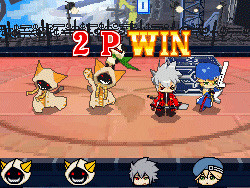 Well, Blazblue clearly is Guilty Gear's successor now. Guilty Gear spun off into other forms of fighting game, including a pared-down PSP brawler and a DS-based multiplayer mess, and now BlazBlue has one of those. BlazBlue: Battle X Battle is a DSIware arena fighter where huge-headed versions of BlazBlue's cast whack each other around, with up to four players allowed at once. It also features online play, and it's only five dollars…in Japan, which means you'll need a Japanese DSi to play it this January.
Well, Blazblue clearly is Guilty Gear's successor now. Guilty Gear spun off into other forms of fighting game, including a pared-down PSP brawler and a DS-based multiplayer mess, and now BlazBlue has one of those. BlazBlue: Battle X Battle is a DSIware arena fighter where huge-headed versions of BlazBlue's cast whack each other around, with up to four players allowed at once. It also features online play, and it's only five dollars…in Japan, which means you'll need a Japanese DSi to play it this January.
Want to see Rival Schools, Capcom's cult-hit fighter, on Xbox Live or the PlayStation Network or just in a reissued package? Tough. A forum post by Capcom's Chris Svenson stated that the rights to various parts of the game, in particular the soundtrack and voice acting, prevent Capcom from re-releasing it. Granted, Capcom also had legal hurdles to clear for Marvel vs. Capcom 2, but Rival Schools isn't nearly as popular. Now I'm afraid to ask about Tech Romancer.
THE TOP 5 OVERLOOKED GAMES OF 2009
So what were the best games of 2009? Uncharted 2, Dragon Age, and Street Fighter IV? Whatever they were, most of them were widely promoted releases, visible even to some people who commit the glaring sin of not caring about video games. Of course, there are dozens of games that don't get that kind of attention, and some of them are excellent, if flawed, little pleasures. Once again, this column's rounding up the best of the lesser-knowns, and once again I'm a sucker for any game that involves a valkyrie.
5. KNIGHTS IN THE NIGHTMARE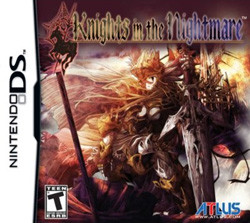 I imagine that a lot of strategy-RPG fans didn't overlook Knights in the Nightmare so much as they ran screaming from the game's first battle. Knights is perhaps the strangest thing to ever hit the often traditional genre of grid-driven strategy games, and it demands that you survive the hour-long tutorial and understand it. Players control a spirit wisp as it flies around the field of battle, dodging energy blasts from enemies and directing allies all at once. It's an often challenging hybrid of bullet-dodging shooter and morbid strategy-RPG, but there's a point where Knights of the Nightmare clicks and everything just flows together right. Or else it just drives you back into the forgiving, comprehensible embrace of Bratz Ponyz 2. Knights shows every sign of being a cult success in the years to come: the game's already growing hard to find, and it has more than the usual share of crazy fans. Listen to them.
I imagine that a lot of strategy-RPG fans didn't overlook Knights in the Nightmare so much as they ran screaming from the game's first battle. Knights is perhaps the strangest thing to ever hit the often traditional genre of grid-driven strategy games, and it demands that you survive the hour-long tutorial and understand it. Players control a spirit wisp as it flies around the field of battle, dodging energy blasts from enemies and directing allies all at once. It's an often challenging hybrid of bullet-dodging shooter and morbid strategy-RPG, but there's a point where Knights of the Nightmare clicks and everything just flows together right. Or else it just drives you back into the forgiving, comprehensible embrace of Bratz Ponyz 2. Knights shows every sign of being a cult success in the years to come: the game's already growing hard to find, and it has more than the usual share of crazy fans. Listen to them.
|
4. HOUSE OF THE DEAD: OVERKILL  It wasn't a particularly good year for Wii games to push boundaries. Platinum Games' gory, half-satirical Madworld probably didn't make back its advertising budget, and even Vanillaware's beautiful Muramasa: The Demon Blade didn't hit it quite as big as its hype and tentacle-attack magazine covers suggested. Sega's House of the Dead: Overkill was another casualty of this curious trend. It made the stunning maneuver of openly exploiting the silliness of House of the Dead, turning what was once blankly comical Hollywood-blockbuster claptrap into full-blown, self-aware slasher-flick nonsense. The undead horrors of House of the Dead nicely fit the New Orleans atmosphere (all right, it's called Bayou City, but no one will be fooled), and Overkill enhances the typical light-gun gameplay with moves that switch viewpoints and build up combos. It even attempts to get past the play-once nature of a gun game by adding bonus modes that actually make return trips worthwhile. And it's all overlaid with constant, Guiness-record swearing and enough B-movie horrors to fill a season of MST3K, with so much gleeful excess that there's no point or reason in leveling criticism. Perhaps Sega should've made an arcade version. It would've livened up any Dave and Buster's. It wasn't a particularly good year for Wii games to push boundaries. Platinum Games' gory, half-satirical Madworld probably didn't make back its advertising budget, and even Vanillaware's beautiful Muramasa: The Demon Blade didn't hit it quite as big as its hype and tentacle-attack magazine covers suggested. Sega's House of the Dead: Overkill was another casualty of this curious trend. It made the stunning maneuver of openly exploiting the silliness of House of the Dead, turning what was once blankly comical Hollywood-blockbuster claptrap into full-blown, self-aware slasher-flick nonsense. The undead horrors of House of the Dead nicely fit the New Orleans atmosphere (all right, it's called Bayou City, but no one will be fooled), and Overkill enhances the typical light-gun gameplay with moves that switch viewpoints and build up combos. It even attempts to get past the play-once nature of a gun game by adding bonus modes that actually make return trips worthwhile. And it's all overlaid with constant, Guiness-record swearing and enough B-movie horrors to fill a season of MST3K, with so much gleeful excess that there's no point or reason in leveling criticism. Perhaps Sega should've made an arcade version. It would've livened up any Dave and Buster's.
|
3. AVALON CODE 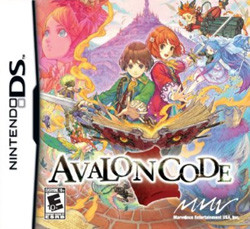 Avalon Code's advertising was misguided, in that it didn't forcefully proclaim the fact that the game lets you juggle-hit enemies until they leave the stratosphere and explode far above the planet. Beyond that, Matrix's action-RPG has plenty of other ideas filling its doomed world, a world that the hero or heroine must catalog in a magical tome. New items, armor, and weapons are created by dissecting the codes that make up everything, figuring into combat as well as the game's branching plotlines and character interaction. There's even a cast of love interests (yes, male and female) to court in Harvest Moon fashion, all as the world spins toward a fate that might not be preventable. Avalon Code was lost amid other DS-based RPGs (some of which Matrix also programmed), but its unique approach and gentle charms make it a standout. Avalon Code's advertising was misguided, in that it didn't forcefully proclaim the fact that the game lets you juggle-hit enemies until they leave the stratosphere and explode far above the planet. Beyond that, Matrix's action-RPG has plenty of other ideas filling its doomed world, a world that the hero or heroine must catalog in a magical tome. New items, armor, and weapons are created by dissecting the codes that make up everything, figuring into combat as well as the game's branching plotlines and character interaction. There's even a cast of love interests (yes, male and female) to court in Harvest Moon fashion, all as the world spins toward a fate that might not be preventable. Avalon Code was lost amid other DS-based RPGs (some of which Matrix also programmed), but its unique approach and gentle charms make it a standout.
|
2. RETRO GAME CHALLENGE 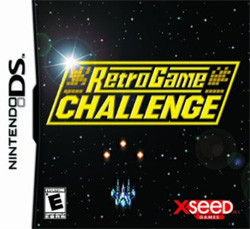 It's not an easy thing to make a game out of Game Center CX, a Japanese TV series wherein comedian Shinya Arino struggles through old games both popular and bizarre. Indieszero and Namco Bandai hit on a great idea, though: sent back in time by a hateful modern Arino, the player relives the 1980s in front of a TV that blares one all-new, old-fashioned game after another. In less skilled hands, Retro Game Challenge would've been a sputter of misplaced nostalgia. Instead, it's an enjoyable, self-mocking look at a generation that killed entire summers by playing NES games, lecturing from the holy writ of Nintendo Power, and arguing over how to pronounce titles like Metroid, Astyanax, and Xexyz. The in-game magazines create an engrossing alternate 1980s, but it's truly the assortment of games that drives everything. Though they're fairly short, nearly all of them are tightly programmed challenges just a little more complicated and fun than the old 8-bit games they're parodying (well, Guadia Quest is kinda dull, but so is actual Dragon Quest). XSEED's carefully localized U.S. release of Retro Game Challenge was noticed, but not quite enough. for proof of this injustice, not XSEED isn't bringing its sequel over from Japan, and so far, neither is any other company. It's not an easy thing to make a game out of Game Center CX, a Japanese TV series wherein comedian Shinya Arino struggles through old games both popular and bizarre. Indieszero and Namco Bandai hit on a great idea, though: sent back in time by a hateful modern Arino, the player relives the 1980s in front of a TV that blares one all-new, old-fashioned game after another. In less skilled hands, Retro Game Challenge would've been a sputter of misplaced nostalgia. Instead, it's an enjoyable, self-mocking look at a generation that killed entire summers by playing NES games, lecturing from the holy writ of Nintendo Power, and arguing over how to pronounce titles like Metroid, Astyanax, and Xexyz. The in-game magazines create an engrossing alternate 1980s, but it's truly the assortment of games that drives everything. Though they're fairly short, nearly all of them are tightly programmed challenges just a little more complicated and fun than the old 8-bit games they're parodying (well, Guadia Quest is kinda dull, but so is actual Dragon Quest). XSEED's carefully localized U.S. release of Retro Game Challenge was noticed, but not quite enough. for proof of this injustice, not XSEED isn't bringing its sequel over from Japan, and so far, neither is any other company.
|
1. VALKYRIE PROFILE: COVENANT OF THE PLUME One must admit that tri-Ace's Valkyrie Profile: Covenant of the Plume wasn't the best strategy-RPG to come along this year. Hell, it wasn't even the best strategy-RPG on the DS, as Devil Survivor and Knights in the Nightmare both trumped it in gameplay. Yet when it comes to games I'll remember and revisit long down the road, nothing released this year stuck with me more than a neglected Valkyrie Profile spin-off. In a genre that frequently offers the player blandly barefaced moral choices or no moral choices at all, Covenant of the Plume is a refreshing punch to the throat. Controlling a vengeful young dolt of warrior, the game forces players to choose between sacrificing comrades or fighting grueling battles, and either decision can be the wrong one in three branching storylines. Valkyrie Profile's button-jamming battles also bring a new angle to the typical strategy-RPG, even if they're sometimes unbalanced and rarely pretty to watch (Kou Yoshinari and You Yoshinari's art, however, is still amazing). And somehow the rough angle makes it all the more memorable. Burdened with a higher-than-usual price and an otherwise marvelous localization that yanks out nearly all of the voice acting, Covenant of the Plume had little traction in this year's busy DS RPG marketplace. But if the game industry is at all fair, it'll get the reputation, the merchandise, and the follow-ups it deserves. One must admit that tri-Ace's Valkyrie Profile: Covenant of the Plume wasn't the best strategy-RPG to come along this year. Hell, it wasn't even the best strategy-RPG on the DS, as Devil Survivor and Knights in the Nightmare both trumped it in gameplay. Yet when it comes to games I'll remember and revisit long down the road, nothing released this year stuck with me more than a neglected Valkyrie Profile spin-off. In a genre that frequently offers the player blandly barefaced moral choices or no moral choices at all, Covenant of the Plume is a refreshing punch to the throat. Controlling a vengeful young dolt of warrior, the game forces players to choose between sacrificing comrades or fighting grueling battles, and either decision can be the wrong one in three branching storylines. Valkyrie Profile's button-jamming battles also bring a new angle to the typical strategy-RPG, even if they're sometimes unbalanced and rarely pretty to watch (Kou Yoshinari and You Yoshinari's art, however, is still amazing). And somehow the rough angle makes it all the more memorable. Burdened with a higher-than-usual price and an otherwise marvelous localization that yanks out nearly all of the voice acting, Covenant of the Plume had little traction in this year's busy DS RPG marketplace. But if the game industry is at all fair, it'll get the reputation, the merchandise, and the follow-ups it deserves.
|
RELEASES FOR THE REST OF DECEMBER
FINAL FANTASY CRYSTAL CHRONICLES: CRYSTAL BEARERS Developer: Square
Developer: SquarePublisher: Square Enix Platform: Wii Players: 1-Various MSRP: $49.99
Crystal Chronicles is often the wayward cousin of the proper and well-liked Final Fantasies, as Chronicles games tread off into multiplayer forays that never capture as many fans as their more successful relative. Yet Crystal Bearers is different, and not just for focusing on a single-player experience. With a seemingly cohesive plot, it develops the world shared by previous Crystal Chronicles games and offers a real protagonist in the form of a roguish crystal-bearing guy called Layle. An old-fashioned adventure involving crystals and near-extinct races (and, of course, duplicitous women), Layle's somewhat clichéd journey seems part Indiana Jones and part Final Fantasy IX, with magical glowing anime superhero theatrics mixed in. At least the gameplay is novel. Crystal Bearers is a real-time action-RPG, allowing Layle to magically seize enemies and throw them around. Also promising are scenes of mid-air battles, where Layle guns down enemies in some bizarre Final Fantasy version of a World War I dogfight.
|
EXTRA LIVES: FIST OF THE NORTH STAR (NES)
 I've put off writing about the Fist of the North Star NES game for a while, just because it involves an embarrassing secret of mine. See, it was the first NES game I really sat down and played. Nintendo took over the hearts and minds of many children at some point in the 1980s, but my experience with the system was limited to brief playtests at store demos until one fateful day when I visited a neighbor kid who had an NES. He owned other games, but he had just rented Fist of the North Star, and we were going to play that whether I liked it or not.
I've put off writing about the Fist of the North Star NES game for a while, just because it involves an embarrassing secret of mine. See, it was the first NES game I really sat down and played. Nintendo took over the hearts and minds of many children at some point in the 1980s, but my experience with the system was limited to brief playtests at store demos until one fateful day when I visited a neighbor kid who had an NES. He owned other games, but he had just rented Fist of the North Star, and we were going to play that whether I liked it or not.
The Fist of the North Star that we played that day was actually the second such game on Nintendo's 8-bit console. The first Hokuto no Ken title hit the Famicom in Japan back in 1986, and no one noticed it until the Internet got around to making fun of hideous old Nintendo games many years after. The second game was based on the Hokuto no Ken 2 TV series, and for some reason Taxan decided to release it in the U.S, complete with sloppily framed cover art of Ken fighting Toki. It didn't stand out during the increasingly crowded height of Nintendo's market-dominating popularity, but some kids doubtless thought it was worth trying just for the title and the basic idea of punching dudes. If only Taxan had mentioned the exploding heads.
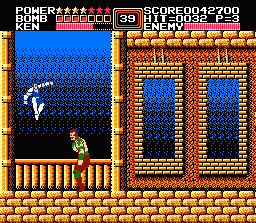 Fist of the North Star finds Ken, itinerant post-apocalyptic hero and manga icon, casually strolling through castles, mazes, and wastelands while dimwitted foes rush at him from either side. It's a bit like Irem's old Kung Fu arcade game, except with a slower pace and nothing much of interest. Ken can either kick enemies off-screen or, with a punch, make their heads explode. To the game's credit, the enemies actually do fly apart in unobjectionable bursts of sprite static (though it's actually less gory than the previous Hokuto no Ken game for the Famicom). Sometimes these foes leave behind stars, which Ken picks up to increase his power. Holding down the attack button launches his traditional rapid-fire strikes, and a full star meter shreds his shirt and lets him throw fireballs.
Fist of the North Star finds Ken, itinerant post-apocalyptic hero and manga icon, casually strolling through castles, mazes, and wastelands while dimwitted foes rush at him from either side. It's a bit like Irem's old Kung Fu arcade game, except with a slower pace and nothing much of interest. Ken can either kick enemies off-screen or, with a punch, make their heads explode. To the game's credit, the enemies actually do fly apart in unobjectionable bursts of sprite static (though it's actually less gory than the previous Hokuto no Ken game for the Famicom). Sometimes these foes leave behind stars, which Ken picks up to increase his power. Holding down the attack button launches his traditional rapid-fire strikes, and a full star meter shreds his shirt and lets him throw fireballs.
As I sat and played it twenty years ago, I had the vague notion that Fist of the North Star was awful. The enemies come infrequently, everything looks average, and Ken's really clumsy against bosses. He can jump to impressive heights, but his attacks often miss, and the game's so shakily programmed that enemies can kill Ken without depleting the last bit of his life meter. Gathering stars is utterly tedious, and Ken's forced to backtrack through stages, punching one dense thug after another in search of power-ups. And if you simply ignore most of the drones and jump through the stage, the level's boss will most likely destroy poor Ken. The music is especially terrible, as it lasts four or five notes before looping into a grating jangle for each stage.
 Taxan's release of Fist of the North Star was changed only slightly from the Japanese Hokuto no Ken game, released two years before it. While Toei's Puss N' Boots NES game was radically different from its Japanese form, Fist of the North Star got only a new title screen and some altered power-ups. The game's also a little harder on the original Famicom, but it's every bit as boring.
Taxan's release of Fist of the North Star was changed only slightly from the Japanese Hokuto no Ken game, released two years before it. While Toei's Puss N' Boots NES game was radically different from its Japanese form, Fist of the North Star got only a new title screen and some altered power-ups. The game's also a little harder on the original Famicom, but it's every bit as boring.
Had that neighbor kid and I been Japanese children, we'd likely have loved the game simply for replicating Ken's head-shattering abilities, and we'd have welcomed the chance to fight enemies from that cool new Hokuto no Ken cartoon (even if the game has no plot and only covers half of that series). We weren't, of course, and Fist of the North Star lasted barely hour with us before we moved on to Rygar and even Metal Gear, which many children mistook for an awful game. Fist of the North Star was returned to the store and stricken from our happy NES memories, and I imagine it was the same for many who picked it up. Today, few remember Fist of the North Star as an NES game, and I'm not sure I want to.
Fist of the North Star for the NES is quite cheap, unless you're after a complete version with a box and a typo-filled manual. The Japanese edition gets the usual markup for overseas buyers, though I suspect it's not in high demand in its native country.
discuss this in the forum (31 posts) |
this article has been modified since it was originally posted; see change history